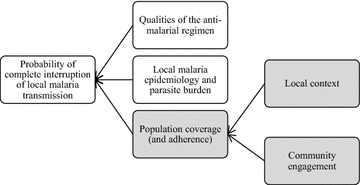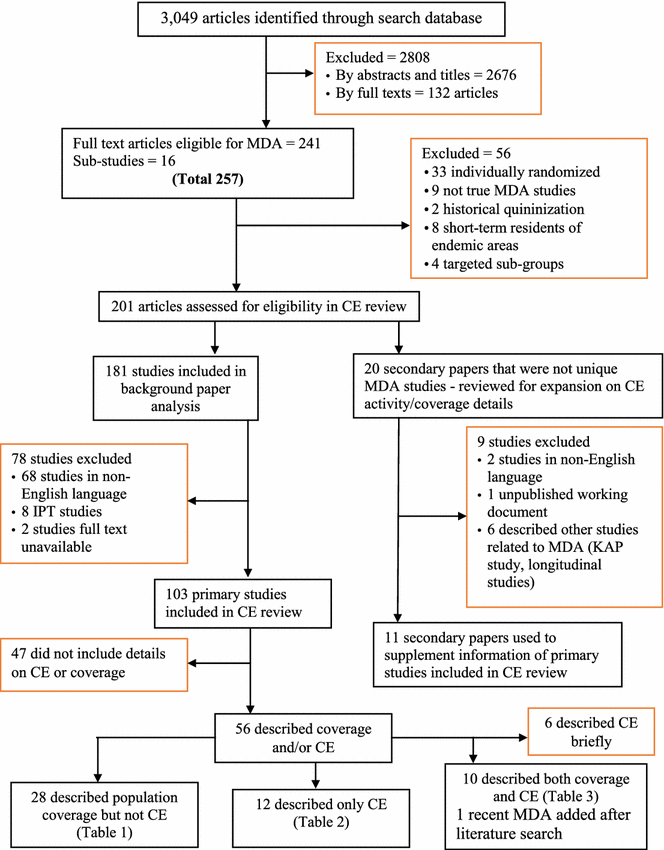Community engagement and population coverage in mass anti-malarial administrations: a systematic literature review
- PMID: 27806717
- PMCID: PMC5093999
- DOI: 10.1186/s12936-016-1593-y
Community engagement and population coverage in mass anti-malarial administrations: a systematic literature review
Abstract
Background: Mass anti-malarial administration has been proposed as a key component of the malaria elimination strategy in South East Asia. The success of this approach depends on the local malaria epidemiology, nature of the anti-malarial regimen and population coverage. Community engagement is used to promote population coverage but little research has systematically analysed its impact. This systematic review examines population coverage and community engagement in programmes of mass anti-malarial drug administration.
Methods: This review builds on a previous review that identified 3049 articles describing mass anti-malarial administrations published between 1913 and 2011. Further search and application of a set of criteria conducted in the current review resulted in 51 articles that were retained for analysis. These 51 papers described the population coverage and/or community engagement in mass anti-malarial administrations. Population coverage was quantitatively assessed and a thematic analysis was conducted on the community engagement activities.
Results: The studies were conducted in 26 countries: in diverse healthcare and social contexts where various anti-malarial regimens under varied study designs were administered. Twenty-eight articles reported only population coverage; 12 described only community engagement activities; and 11 community engagement and population coverage. Average population coverage was 83% but methods of calculating coverage were frequently unclear or inconsistent. Community engagement activities included providing health education and incentives, using community structures (e.g. existing hierarchies or health infrastructure), mobilizing human resources, and collaborating with government at some level (e.g. ministries of health). Community engagement was often a process involving various activities throughout the duration of the intervention.
Conclusion: The mean population coverage was over 80% but incomplete reporting of calculation methods limits conclusions and comparisons between studies. Various community engagement activities and approaches were described, but many articles contained limited or no details. Other factors relevant to population coverage, such as the social, cultural and study context were scarcely reported. Further research is needed to understand the factors that influence population coverage and adherence in mass anti-malarial administrations and the role community engagement activities and approaches play in satisfactory participation.
Keywords: Community; Engagement; MDA; Malaria; Population coverage.
Figures
References
-
- WHO. About the emergency response to artemisinin resistance in the Greater Mekong subregion. Geneva: World Health Organization; 2014. http://www.who.int/malaria/areas/greater_mekong/overview/en/. Accessed 4 Sept 2016.
-
- WHO. Activities for the monitoring and containment of artemisinin resistance. Geneva: World Health Organization; 2015. http://www.who.int/malaria/areas/greater_mekong/activities/en/. Accessed 4 Sept 2016.
Publication types
MeSH terms
Substances
Grants and funding
LinkOut - more resources
Full Text Sources
Other Literature Sources
Medical



